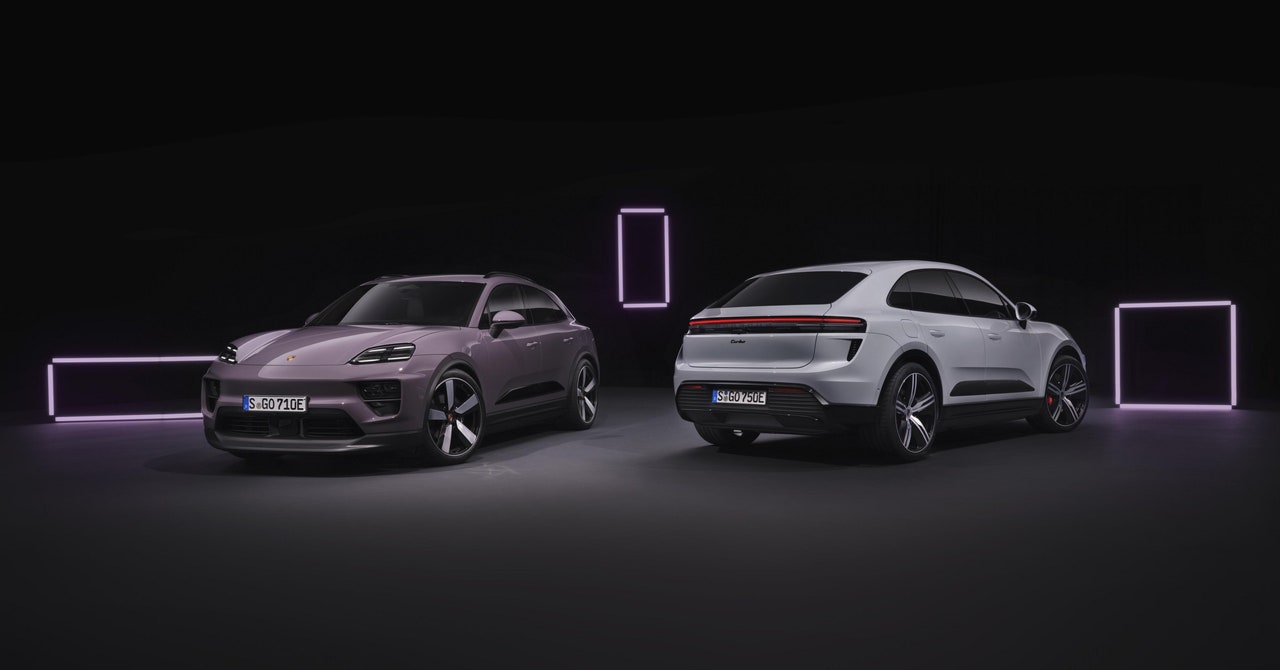The Germans do it Do you have an impressively long word for something that is completely new yet feels reassuringly familiar? If so, this is how we would like to describe the new all-electric Porsche Macan.
From the outside it resembles the old Macan, from the inside it closely resembles the new Cayenne and drives with the same level of refinement and enthusiasm that gives Porsche SUVs their trademark. Aside from the sporty soundtrack, the fact that it’s electric is neither here nor there.
It’s not called “e-Macan” or “Macan EV”. It won’t be sold alongside an identical petrol version, built to appease drivers worried about range anxiety to switch to electric (although the old model will be available in some markets, including the UK, until the end of 2025).
It’s just the new Macan. An electric Macan that doesn’t stand out at all because it runs on batteries. No green badge, no cute wheels that look like plugs, no lightning bolt symbols. Not even a radical redesign of the interior that makes the driver feel like their purchase is like setting off into a brave new world. It’s just a midsize Porsche SUV that happens to be electric. It may not be an exciting move, but it oozes quiet confidence.
The new Macan was unveiled in January, priced from $78,800 (£69,800 in the UK) and is available to order now. It competes against the upcoming Polestar 4 and the aging Jaguar I-Pace. For comparison, the electric Macan 4 costs $16,000 more than the previous base model, or just $4,300 more than the previous Macan S, but offers similar performance outright.
The electric Macan Turbo brings Porsche’s smaller SUV into the six-figure range for the first time, but at $105,300 it costs slightly less than the $109,000 Maserati Grecale Folgore, although it is faster and more powerful, offers a longer range and charges faster.
It will also compete with the Audi Q6 e-tron, with which it shares its base. Both cars are based on the new Premium Platform Electric (PPE) architecture, developed jointly by Porsche and Audi. It’s an 800-volt system that allows the Macan’s 100 kWh battery (95 kWh usable) to be charged with up to 270 kW. That’s slightly below the recently facelifted Taycan’s incredible 320kW maximum charging power, but still means the Macan can charge from 10 to 80 percent in just 21 minutes, Porsche claims.
Split trick loading process
Porsche knows that such powerful public chargers are not always available, so the PPE has a trick up its sleeve. Plug the Macan into a lower-power 400-volt charger and a high-voltage switch is activated, effectively splitting the 800-volt battery into two 400-volt packs, allowing the car to charge up to 135 kW without a high-voltage booster can be.
When the Macan plugs it into the socket at home, it fills up to 11 kW. While driving, its regenerative braking system can feed up to 270 kW of electricity back into the battery.
There are currently two versions of the EV Macan, the 4 and the Turbo, with more to come later. If you’re familiar with electric cars, you already know that you should go for the 4 because it’s cheaper, goes further, and is still more powerful than any other family SUV has to have – even one with a Porsche badge on its nose .
